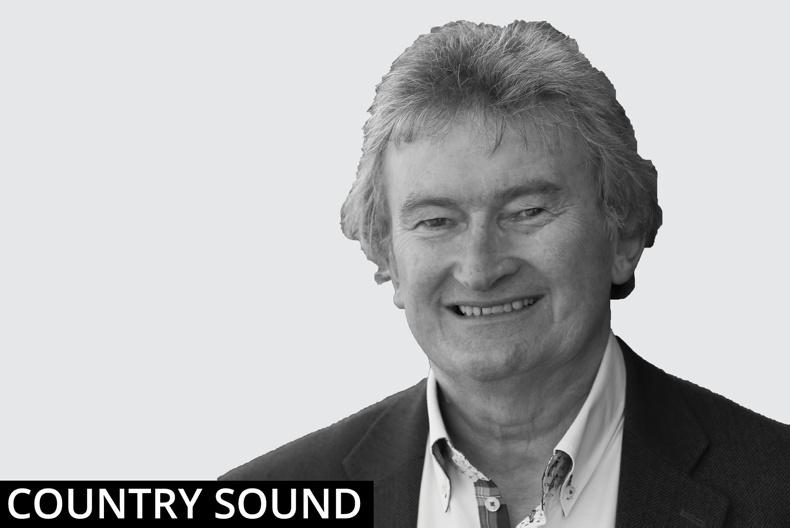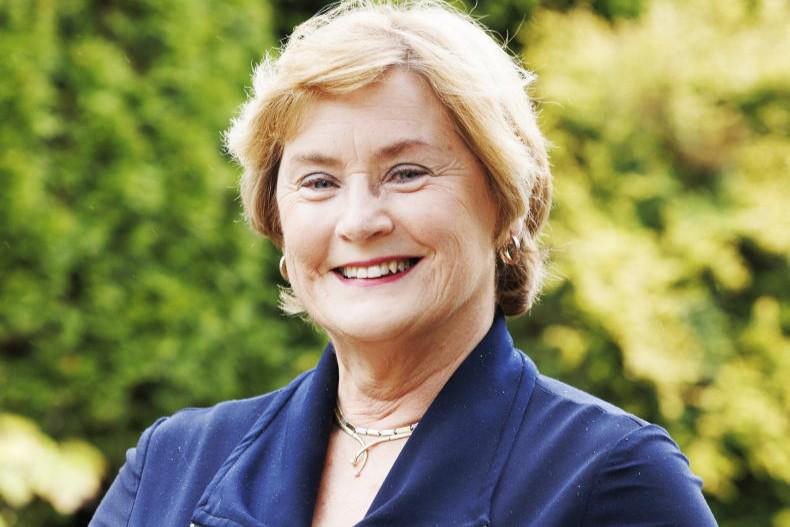A Happy Type of Sadness – A Journey Through Irish Country Music by Kevin Martin should find a place on the shelves of all connoisseurs of country music here in Ireland, as this is without doubt the most authentic history of a culture at the very heart of a way of life for countless thousands of Irish people at home and overseas.
The book was two years in the making and the Crossmolina native – who taught English, communications and cultural studies for 25 years – has garnered some absolute gems of reflections and contributions in this magnificent book that runs to 320 pages.
It includes a wide range of interviews from those engaged in various parts of the country music scene and industry, including performers, managers, songwriters, radio presenters, journalists and producers.
From an Irish perspective, it is fair to say that it is not an over-estimation of the value of this book to mention it in the same context as the work carried out by the great American collector of folk songs Alan Lomax, who was born in Texas. Lomax went out into the mountains of Appalachia (and numerous other parts of America), where he recorded many of the old ballads on reel-to-reel recorders in the 1950s and rendered an amazing service to preserving a music tradition that went all the way back to Ireland and Scotland and the north of England and found a new home in the southern States of America.

Kevin (left) with his father, Jimmy Martin.
The tale
Kevin Martin has made a massive contribution to country music with this amazingly researched book. Apart from the music itself and the many players who have been at the heart of the story, he superbly reflects the role of the music in the ordinary lives of the people over many decades.
Big Tom is referenced on numerous occasions throughout the book. Indeed, no one is mentioned more that the extraordinary ordinary man from Oram, near Castleblayney.
The outreach of Big Tom and The Mainliners all over Ireland and among the Irish in England is looked at from a social perspective and the huge role played by the Irish bands who went to England and provided a home away from home for so many. In the preface, Kevin beautifully captures the magic of Big Tom’s appearance on the first Late Late Show Country Music Special on 23 October 2015: “McBride looked a little frail and his voice sounded a little faded and shaky as he sang his most famous country song, Four Country Roads, but the audience was entranced. They could not dance because they were confined to their seats, but as the camera panned through the crowd the entire mass of people swayed and sang along.
“It could have been a cult worshipping an all-powerful leader, such was the devotion on their faces. Here was an old but still physically imposing man, singing about a small village in Co Galway, surrounded by a large group of worshippers gazing at him as if he was revealing the secret to everlasting existence (...) There was nothing less than love in the eyes of the audience.”
Like all good books, it goes right back to the roots. Shay Hutchinson, the genial son of Tyrone, is remembered for his role in pioneering country music in Ireland. Shay and the Melody Aces were like the good farmers going out and sowing the seeds.

The book cover.
The Cotton Mill Boys and the Smokey Mountain Ramblers are also remembered in a special way. Along with Ray Lynam and The Hillbillies, they were probably the most country of all the bands that played the dancehall circuit. Both The Smokeys and The Cottons, as they were often referred to, had strong shades of bluegrass influences, traits that endure with both Gerry Madigan and Georgie Kaye to this day.
Jim Reeves and Hank Williams and their impact on spreading the country gospel to the world are nicely documented by Kevin, who clearly has a good ear for the enduring tales. No reference to the Reeves Irish tour of 1963 would be complete without a mention of the night Jim arrived in the Diamond Ballroom in Kiltimagh after having played down in the Atlantic Ballroom in Tramore the night before.
The story goes that Jim refused to go on stage because the piano was badly out of tune. A local character, Paddy Coyne, told a shopkeeper in the town the next morning the reason Jim refused to sing was because “the bloody piano wouldn’t start”.
More recent years
The Garth Brooks phenomenon is revisited and the huge controversy that led to the cancellation of his five shows in Croke Park. Robert Mizzell talks about his life here in Ireland since moving over from Louisiana.
Gene Stuart is singled out for special mention and some well-deserved tributes. Willie McHugh is quoted from his tribute in the Mayo News: “Gene Stuart, were he born in America, would have been an international singing star. Because few, if indeed any, had a naturally cultured singing voice like Gene and that lovely Ulster timbre, synonymous with singers from that region.”
Daniel O’Donnell, Phil Begley, Nathan Carter, Derek Ryan, Margo O’Donnell, Maisie McDaniel, Mick Flavin, Declan Nerney, Brian Coll, Sandy Kelly, Louise Morrissey, Susan McCann and Roly Daniels are just a handful of the artists who feature throughout this engaging and inspiration study of country music.
Kevin Martin, who now resides in Murrisk beside Croagh Patrick (The Reek), a few miles from Westport, has done a massive service to country music with this superbly researched book. This is a generous read and will make a welcome addition to any Christmas presents for country music followers. Put it on your list. Your special friends will be glad that you did.
A Happy Type of Sadness – A Journey Through Irish Country Music by Kevin Martin should find a place on the shelves of all connoisseurs of country music here in Ireland, as this is without doubt the most authentic history of a culture at the very heart of a way of life for countless thousands of Irish people at home and overseas.
The book was two years in the making and the Crossmolina native – who taught English, communications and cultural studies for 25 years – has garnered some absolute gems of reflections and contributions in this magnificent book that runs to 320 pages.
It includes a wide range of interviews from those engaged in various parts of the country music scene and industry, including performers, managers, songwriters, radio presenters, journalists and producers.
From an Irish perspective, it is fair to say that it is not an over-estimation of the value of this book to mention it in the same context as the work carried out by the great American collector of folk songs Alan Lomax, who was born in Texas. Lomax went out into the mountains of Appalachia (and numerous other parts of America), where he recorded many of the old ballads on reel-to-reel recorders in the 1950s and rendered an amazing service to preserving a music tradition that went all the way back to Ireland and Scotland and the north of England and found a new home in the southern States of America.

Kevin (left) with his father, Jimmy Martin.
The tale
Kevin Martin has made a massive contribution to country music with this amazingly researched book. Apart from the music itself and the many players who have been at the heart of the story, he superbly reflects the role of the music in the ordinary lives of the people over many decades.
Big Tom is referenced on numerous occasions throughout the book. Indeed, no one is mentioned more that the extraordinary ordinary man from Oram, near Castleblayney.
The outreach of Big Tom and The Mainliners all over Ireland and among the Irish in England is looked at from a social perspective and the huge role played by the Irish bands who went to England and provided a home away from home for so many. In the preface, Kevin beautifully captures the magic of Big Tom’s appearance on the first Late Late Show Country Music Special on 23 October 2015: “McBride looked a little frail and his voice sounded a little faded and shaky as he sang his most famous country song, Four Country Roads, but the audience was entranced. They could not dance because they were confined to their seats, but as the camera panned through the crowd the entire mass of people swayed and sang along.
“It could have been a cult worshipping an all-powerful leader, such was the devotion on their faces. Here was an old but still physically imposing man, singing about a small village in Co Galway, surrounded by a large group of worshippers gazing at him as if he was revealing the secret to everlasting existence (...) There was nothing less than love in the eyes of the audience.”
Like all good books, it goes right back to the roots. Shay Hutchinson, the genial son of Tyrone, is remembered for his role in pioneering country music in Ireland. Shay and the Melody Aces were like the good farmers going out and sowing the seeds.

The book cover.
The Cotton Mill Boys and the Smokey Mountain Ramblers are also remembered in a special way. Along with Ray Lynam and The Hillbillies, they were probably the most country of all the bands that played the dancehall circuit. Both The Smokeys and The Cottons, as they were often referred to, had strong shades of bluegrass influences, traits that endure with both Gerry Madigan and Georgie Kaye to this day.
Jim Reeves and Hank Williams and their impact on spreading the country gospel to the world are nicely documented by Kevin, who clearly has a good ear for the enduring tales. No reference to the Reeves Irish tour of 1963 would be complete without a mention of the night Jim arrived in the Diamond Ballroom in Kiltimagh after having played down in the Atlantic Ballroom in Tramore the night before.
The story goes that Jim refused to go on stage because the piano was badly out of tune. A local character, Paddy Coyne, told a shopkeeper in the town the next morning the reason Jim refused to sing was because “the bloody piano wouldn’t start”.
More recent years
The Garth Brooks phenomenon is revisited and the huge controversy that led to the cancellation of his five shows in Croke Park. Robert Mizzell talks about his life here in Ireland since moving over from Louisiana.
Gene Stuart is singled out for special mention and some well-deserved tributes. Willie McHugh is quoted from his tribute in the Mayo News: “Gene Stuart, were he born in America, would have been an international singing star. Because few, if indeed any, had a naturally cultured singing voice like Gene and that lovely Ulster timbre, synonymous with singers from that region.”
Daniel O’Donnell, Phil Begley, Nathan Carter, Derek Ryan, Margo O’Donnell, Maisie McDaniel, Mick Flavin, Declan Nerney, Brian Coll, Sandy Kelly, Louise Morrissey, Susan McCann and Roly Daniels are just a handful of the artists who feature throughout this engaging and inspiration study of country music.
Kevin Martin, who now resides in Murrisk beside Croagh Patrick (The Reek), a few miles from Westport, has done a massive service to country music with this superbly researched book. This is a generous read and will make a welcome addition to any Christmas presents for country music followers. Put it on your list. Your special friends will be glad that you did.











SHARING OPTIONS